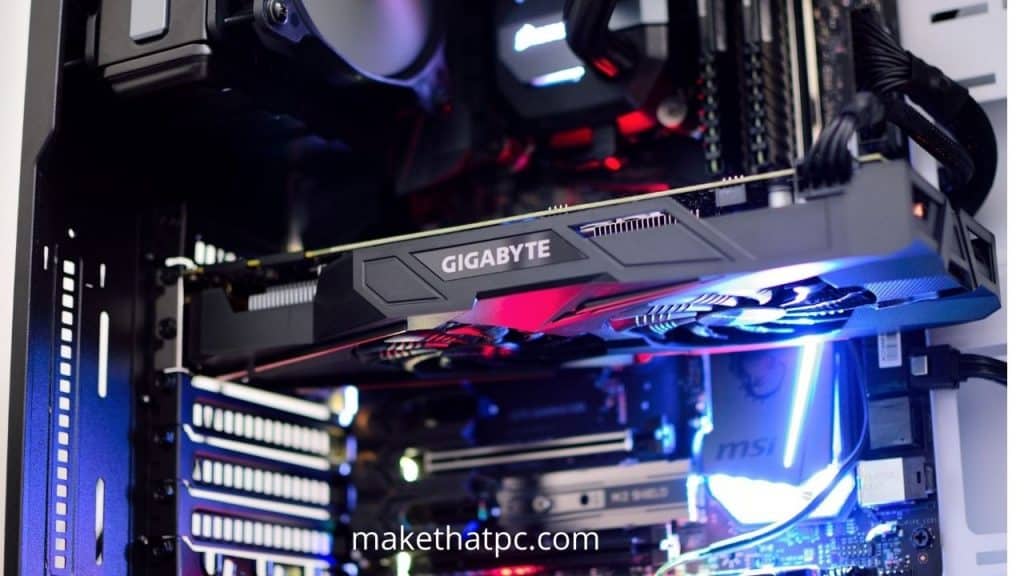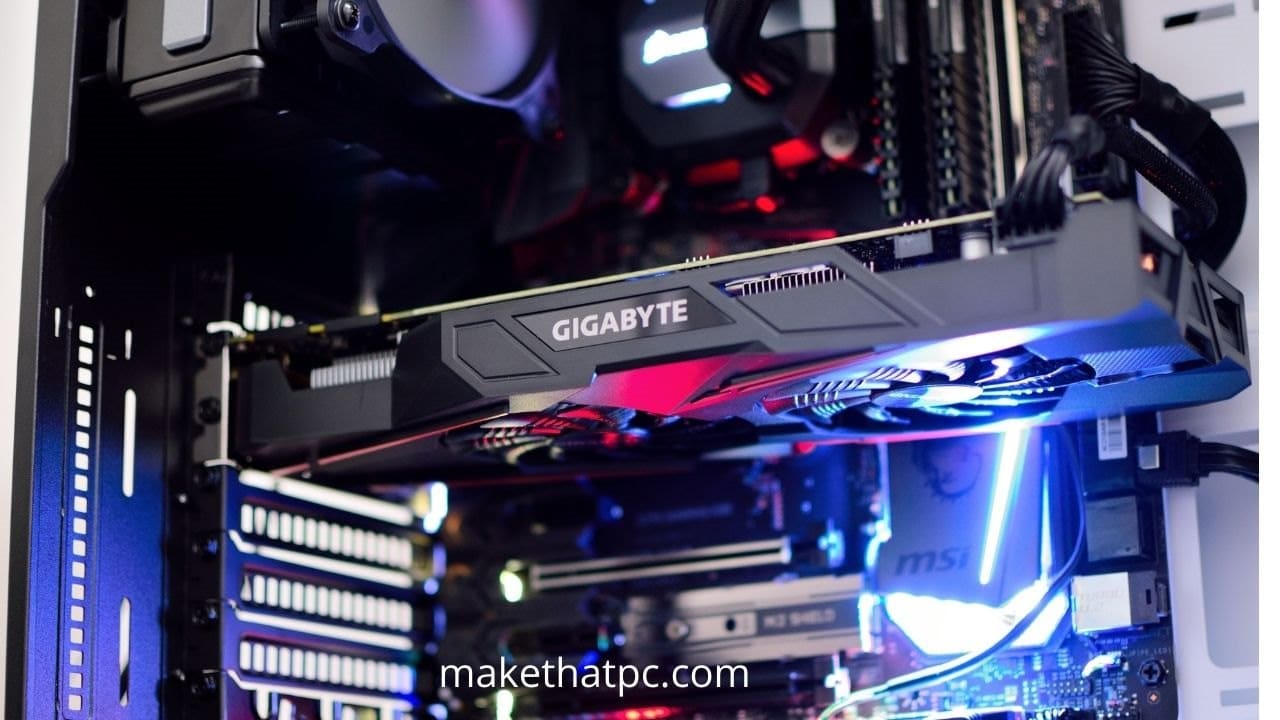With the rising excitement about video games, hardcore professional gamers and enthusiasts remain curious about installing a GPU on their systems. For the record, The importance of a GPU is unbeatable & irreplaceable, as it performs a major role at the backend to boost your gaming performance. However, one question lies unanswered. Gamers keep doubting whether it is possible to install a GPU even after you build your PC.
Well, we are here to break it down for you. The short answer is, Yes! You can certainly install a graphics card after you set up your PC. For more details, scroll down to get a grasp of all you need to know…

Also Read: How to upgrade pre-built PC?
Why do you need a GPU on a PC?
For starters, A GPU performs a plethora of functions that one cannot overlook. The following are some of the reasons that explain the importance of a GPU.
1. An essential for gaming
A graphics processing unit, undoubtedly, is a key requirement for your computer, especially if you are a gamer. Games have a lot of video and graphics to render that only a GPU can efficiently handle on your PC. Not to mention, the higher your FPS and resolution requirements, the more you will have to invest in a good graphics card. So, if you have a graphics card in your prebuilt PC and it is not allowing you to play some games, it is definitely important to upgrade I
2. 3D rendering
As discussed above, games these days require a graphics card for efficient gaming. The key role of a GPU is to decode the 3D animation and render it to the computer screen.
On the flip side, In the absence of a GPU, you may be able to play your favorite games. To put it simply, you would lack the satisfaction of the perfect gaming experience. Such games will lag and the graphics will not be rendered effectively in real-time. Software like Maya, Blender, 3DS Max, Cinema 4D, and Houdini needs a good amount of graphics power in order to render those heavy 3D projects. So, a graphics card is the most important component there.
3. Ray tracing
Pro gamers are already well-versed with the idea of ray tracing. In case you don’t know, this technology uses light rays to bifurcate bright and dull areas, also creating shadows. In a nutshell, it provides a realistic experience for the modern-day gamer. So, if you want to play Ray Tracing-supported games, which is only possible with the NVIDIA graphics cards, you will have to upgrade to an NVIDIA card. More specifically, you will have to use the NVIDIA GeForce RTX series graphics card in order to make the most out of your game’s ray tracing features.
4. Used for science and AI purposes
GPUs are the talk of the town due to the ongoing rise in debates over cryptocurrencies. A graphics card is also known for mining bitcoin and many other virtual currencies. It is largely popular as crypto mining. GPUs possess the features and technologies that can speed up processes such as mining cryptocurrencies. GPUs are good for huge calculations because they come with numerous cores (thousands of them) which make them good for repetitive tasks. As compared to the CPUs, these calculations can be done properly with the help of GPUs.
There are numerous other reasons why you may want to upgrade to a new graphics card on a prebuilt PC. Tasks like video editing, photo editing, VFX, blockchain, etc will demand good graphics power. Even non-gamers can have numerous benefits from graphics cards.
Things to keep in mind before you buy a new graphics card for your old PC
Check out the following determinants before buying your GPU.
1. PCI Express slot
You need a PCIe x 16 slot for inserting a GPU. The PCIe 4.0 protocol doubles the bandwidth of PCIe 3.0. So, if you are going for a graphics card that has PCIe 4.0, you will have to make sure your motherboard has enough bandwidth to support it. The lanes allocated to your PCIe slot should be more or equal to your graphics card required.
For example, the RTX 3080 is twice as fast as the RTX 2080. But, the good news is that you do not have to buy a new motherboard. Your PCIe 4.0 card is backward compatible with the PCIe 3.0 boards. Only on high FPS gaming, you can start to consume all the bandwidth of your PCIe 3.0 lanes.
2. Size of the PC case
A slim PC may not allow a large GPU to be inserted smoothly. Thus the size of your PC is a prerequisite for buying the perfect GPU. It is essential since you need to buy a graphics card that can comfortably fit with the components of your PC. All mid-tower cases will allow you to install all the graphics cards without any issues. Cases smaller than mid-towers might cause problems.
For example, if you are going to install the RTX 3080 or 3080 Ti reference card, you must have space for 11.2” (285mm) x 4.4” (112mm) x 2-slot card.
3. Eliminating the bottleneck
You must not compromise on your CPU just to buy an expensive GPU. A weak CPU might cause bottlenecks on your PC, thus deteriorating its performance. Thus, having an efficient CPU with compatible components is a must while buying a new GPU. Also, you should always pick the GPU as per your CPU specifications. Again, I would suggest using a CPU/GPU bottleneck calculator because there is nothing called a perfect CPU and GPU combination. There will always be some kind of bottleneck or overkill going on. You can know more about a CPU’s importance for gaming right here.
4. Price
Ensure that the price you are paying for your GPU is worth the deal. While professional gamers might want the ultimate best GPUs, content creators can easily go for a decently-priced GPU. In either case, don’t spend unnecessarily and invest in a better CPU instead.
5. Memory
The card memory determines the quality of the images you see on your screen and also your system’s ability to run certain programs. GPUs usually come with memory ranging between 2 to 12 GB of video RAM. Get a graphics card with considerably large memory, especially if you are a professional gamer.
However, a 6GB graphics card will be capable of running most of the games at good FPS. I would also suggest checking the system requirements of your games or software before you make your decision on the right Video memory. Each game will have different requirements so you should always go for the one that suits you the best.
6. Power
A graphics card demands excessive power usage. You need to check your power connector for the same. Connectors can be 6-pin or 8-pin and you can decide on your GPU that suits best with your power connectors. For example, graphics cards like RTX 3080 and 3080 Ti would demand a 750W Power Supply Unit to work adequately.
Each graphics card will demand a different level of power input and you can confirm that by visiting the official websites. Generally, you will have to keep more than a 600W power supply in order to run high-end cards.
7. Cooling
GPUs besides consuming power, also produce excessive heat. You need proper cooling solutions to distribute the heat. The TDP value reflects the scale of heat a GPU produces. So, the more the TDP value, the greater number of fans you need to cover it. All the graphics cards have enough cooling capacity if the outer environment is properly ventilated. You don’t have to think much about it unless you have a poor case cooling system. If the airflow inside your case is messed up, the graphics card will also tend to heat up more than it should in general.
How to buy the right GPU for your PC?
Getting the ideal graphics card home for yourself significantly depends on the CPU you are currently using. The interconnection between your CPU and GPU is of utmost importance to gauge the performance of your system. The lack of perfect compatibility between your CPU and GPU would result in bottlenecks.
A bottleneck calculator will allow you to check how well your CPU and GPU can work together. These tools will allow you to always pick the right CPU for a GPU or vice-versa. You can always use this amazing bottleneck calculator to find out the best CPU and GPU combination with the least bottleneck possible.
How to play games until I install the GPU?
You must be under the impression that it seems impossible to play games without a GPU. Certainly not! Your CPU could also serve as a low-key GPU for the time being. You should have a CPU with an integrated GPU for that. Most Intel CPUs will come with integrated graphics. There are processors with built-in graphics, commonly known as integrated graphics.
The cons are that there is no separate memory for graphics in such processors. The GPU then works using the system memory which it shares with the CPU. Nevertheless, such a system of shared memory produces less heat and consumes relatively less power. Thus, the battery life becomes longer. You can try such CPUs by the time you buy a separate graphics card.
How to install the graphics card on a pre-built PC?
There is no special method of installing a graphics card inside a Pre-built PC. The pre-built systems also use the same motherboards that you use inside the custom-built PC. However, you will have to make sure you are buying the right graphics card as per the motherboard and CPU specifications. You can always check the user manual for that. You can use software like Speccy or HWinfo to see your motherboard and CPU model and then pick the graphics card.
Make sure to install your graphics card on the top PCIe slot. This slot will have the maximum PCIe bandwidth allocated to it. You can also watch this YouTube video to see how you can do it without hassles.
Wrap Up
A graphics card is of critical importance for gamers since the games these days require huge power consumption. Be sure of what you are buying before stepping on to purchase it. Do your research well, and get home the perfect GPU that suits all your requirements. Read this graphics card buying guide for more information.
Let me know what you think about this article!

I am Anshul Rana, an experienced author specializing in PC gear reviews and Windows 10 software tutorials. With a strong passion for technology and an in-depth understanding of the PC industry, I provide insightful and detailed analyses of computer peripherals, gaming gear, and software solutions. My writing style is concise yet informative, making complex topics accessible to both beginners and advanced users. Through my reviews and tutorials, I aim to offer valuable guidance, helping readers make informed decisions to enhance their PC experience and explore the vast possibilities of Windows 10 software.










